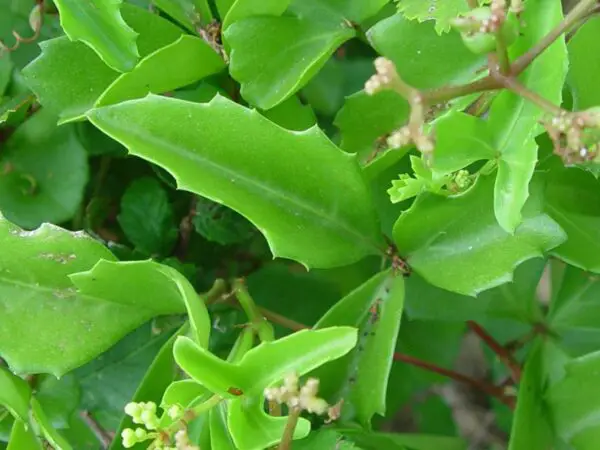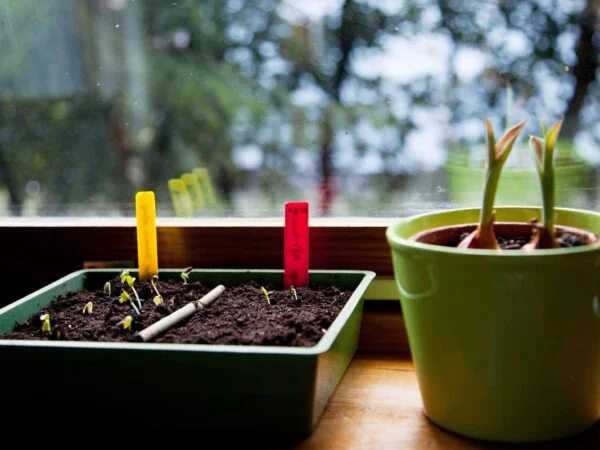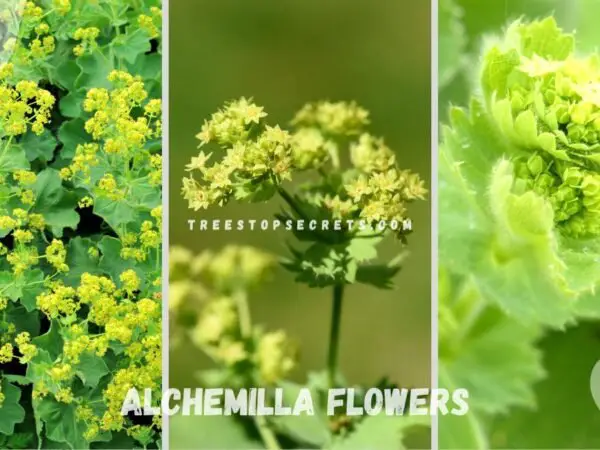Ever wondered how to grow your very own pistachio tree right in your backyard? Curious about the secrets to nurturing this delicious nut-producing plant? From planting tips and ideal growing conditions to maintenance advice and harvesting techniques, we've got you covered. Get ready to embark on a green-thumb journey like no other as we uncover the step-by-step process of cultivating these flavorful gems in your own garden. So, are you ready to learn how you can bring homegrown pistachios straight to your table?
Key Takeaways
- Proper Understanding: Learn about the specific needs and characteristics of pistachio trees to ensure successful growth.
- Preparation is Key: Adequately prepare the planting site by selecting a sunny location with well-draining soil.
- Planting Steps: Follow the correct planting process, including proper depth and spacing to promote healthy root development.
- Water and Soil Care: Maintain a consistent watering schedule and manage soil quality to support the tree's growth.
- Fertilize and Prune: Regularly fertilize the tree and prune as needed to encourage optimal fruit production.
- Pest and Disease Control: Implement effective pest and disease management strategies to protect your pistachio tree.
Understanding Pistachio Trees
Types Overview
Pistachio trees come in various varieties such as Kerman, Peters, and Red Aleppo. Each type has distinct characteristics and growth patterns that influence their cultivation. Selecting the suitable pistachio tree variety is vital for successful growth.
Choosing the right type of pistachio tree determines its adaptability to your specific climate and soil conditions. For instance, if you live in a region with hot summers, a variety like Kerman might be more appropriate due to its heat tolerance. Consider factors like tree size, nut yield, and resistance to pests when selecting the ideal pistachio tree type.
Growth Conditions
Pistachio trees require specific conditions to thrive successfully.These trees flourish in full sun exposure with at least 6 to 8 hours of direct sunlight daily. Inadequate light can result in stunted growth and lower nut production levels.
Temperature plays a crucial role in the growth of pistachio trees. They prefer warm climates with long summers but need a minimum winter dormancy temperature of 45°F (7°C). Extreme cold can harm or even kill these trees; therefore, it's essential to ensure they are protected during harsh winters.
Humidity levels also impact pistachio tree health significantly; they do best in arid or semi-arid regions with low humidity levels due to their susceptibility to fungal diseases under high moisture conditions.
Preparing for Planting
Soil Requirements
Pistachio trees flourish in well-draining soil with a pH between 7.0 and 8.0. Ideal soil types include sandy loam or loamy soils, which support robust root development. To optimize soil fertility, regular testing and necessary amendments should be conducted to ensure the tree's health and growth.
It is crucial to overwinter pistachio seeds before planting them to break dormancy effectively and encourage successful sprouting. The seeds require a period of cold stratification, where they are stored in a moist medium at temperatures ranging from 32°F to 41°F (0°C - 5°C). This process mimics the natural conditions that would occur if the seeds were left outside during winter.
Propagation Methods
When considering how to grow a pistachio tree, one must understand the two primary propagation methods: grafting and budding techniques. Grafting involves joining a shoot or bud from one plant onto another compatible rootstock, ensuring that desired traits are maintained while enhancing vigor. On the other hand, budding entails inserting a bud from a selected variety onto a seedling rootstock as it grows.
Planting Process
Best Time to Plant
Pistachio trees thrive when planted in early spring, once the frost risk has passed. Spring planting helps the tree develop strong roots before the intense summer heat sets in. It's crucial to avoid planting during extreme temperature fluctuations or drought conditions.
During late winter or early spring, when temperatures begin to rise and stabilize, it is an ideal time to plant pistachio trees. This timing allows the young tree to adapt gradually as the weather warms up and provides ample time for root establishment before facing harsh summer conditions.
Planting Steps
To ensure successful growth of a pistachio tree, start by digging a hole that is twice as wide and deep as the root ball from its nursery container. Carefully position the tree in the hole at the same depth it was originally planted in its container.
Once you have placed your pistachio tree correctly in the hole, backfill with soil while gently firming it around the roots. This step ensures that there are no air pockets left around the roots which could hinder proper growth and development of your new sapling.
Watering and Soil Management
Watering Schedule
Newly planted pistachio trees need consistent watering to establish their roots firmly in the soil. During the first year, it's crucial to water deeply once or twice a week. This frequent watering helps the tree adapt to its new environment and develop a strong root system for long-term growth. As the pistachio tree matures, it becomes more resilient to drought conditions; however, periodic irrigation is still beneficial for optimal health and productivity.
To maintain healthy growth, consider establishing a regular watering schedule based on your tree's specific needs. Observing signs of stress like wilting leaves can indicate when additional watering is necessary. By adjusting the frequency and amount of water based on environmental conditions and tree development stages, you can ensure that your pistachio tree thrives throughout its lifespan.
Soil Management
Monitoring nutrient levels and pH balance through routine soil testing is essential for effective soil management when cultivating pistachio trees. By understanding your soil composition, you can make informed decisions about fertilization requirements tailored to your tree's needs. Incorporating organic matter such as compost or well-aged manure into the soil helps enhance its structure by promoting drainage and aeration.
Mulching around the base of your pistachio tree offers multiple benefits for soil management. Mulch acts as a protective barrier that conserves moisture in the soil while also suppressing weed growth that could compete with your tree for essential nutrients. Choosing organic mulch materials like wood chips or straw not only improves soil quality but also contributes to overall ecosystem health by reducing chemical inputs.
Fertilizing and Pruning
Fertilizing Schedule
To grow a pistachio tree successfully, it's crucial to follow a proper fertilizing schedule. Apply a balanced fertilizer designed for fruit trees in early spring to provide essential nutrients. During active growth periods, consider using a nitrogen-based fertilizer to support the tree's development. Ensure you adhere to the recommended application rates based on soil test results to avoid over-fertilization.
Pruning is vital. It is best done during late winter or early spring while the tree is dormant. By removing dead or diseased branches, you can prevent potential issues and promote overall tree well-being. Moreover, thinning out crowded branches will enhance air circulation within the canopy and allow more sunlight to reach all parts of the tree.
Pruning Techniques
Proper pruning techniques are essential for pistachio trees as they help maintain their shape and health. During late winter or early spring when the tree is dormant, take time to prune effectively by eliminating any dead or diseased branches that could harm the overall growth of your pistachio tree. This practice not only ensures good health but also enhances its appearance.
Thinning out crowded branches allows better air circulation within the canopy of your pistachio tree while enabling more light penetration throughout its structure. This process helps in reducing disease risks and promoting optimal photosynthesis for healthy growth.
Flowering and Nut Bearing
Pistachio trees have separate male and female flowers on different branches. The male flowers release pollen that must reach the female flowers for pollination to occur. This process is crucial for nut development and yield.
Once successful pollination happens, pistachio nuts start to grow and develop. Nuts undergo stages of enlargement, shell hardening, and kernel filling. It's vital to provide sufficient water and nutrients during these stages to ensure high-quality nuts.
Pest and Disease Management
Common Pests
Pistachio trees are prone to pests such as aphids, mites, and stink bugs. To protect your tree, keep an eye out for any signs of damage caused by these pests. If you spot them, consider using insecticides specifically designed to combat these intruders. Alternatively, you can rely on nature's helpers - ladybugs - which are beneficial insects that naturally control pest populations.
Early detection is key. Regularly inspect the leaves and branches for any unusual spots or holes that could indicate a pest problem. By staying vigilant and addressing issues promptly with the right treatments or interventions, you can safeguard your pistachio tree from harmful infestations.
Disease Prevention
To prevent diseases like Botryosphaeria canker and Verticillium wilt from affecting your pistachio trees, practice good sanitation habits in your orchard. This involves removing fallen leaves and debris regularly since they can harbor disease-causing pathogens that may spread to healthy trees.
Regular inspections are crucial for detecting signs of disease early on. Look out for symptoms such as wilting leaves or unusual discoloration on the bark. Should you notice anything amiss during your inspection rounds, take immediate action to address the problem before it escalates.
Harvesting and Storing Pistachios
Harvest Time
Pistachio trees yield nuts ready for harvest in late summer or early fall. The key is to let the nuts reach full maturity on the tree. Wait until the hulls split open, indicating ripeness, and the shells harden before picking them.
Harvesting pistachios at the right time ensures optimal flavor and texture. Once you notice that most of the hulls have naturally opened up, it's time to begin collecting them from the tree. This natural splitting indicates that the nuts are ripe and ready for harvesting.
Storage Methods
After harvesting, it's crucial to store pistachio nuts properly to maintain their freshness. Choose a cool, dry location with good air circulation for storage. Ensure that harvested pistachios are thoroughly dried before storing them to prevent mold growth.
Properly dried pistachio nuts can be stored in airtight containers or vacuum-sealed bags for an extended period without losing quality. Protect them from exposure to moisture or high humidity levels as these conditions can lead to spoilage. By following proper storage methods, you can enjoy your homegrown pistachios long after harvest season has ended.
Aftercare Tips
Seasonal Care
To ensure optimal growth of your pistachio tree, it is crucial to provide proper seasonal care. Pruning during the dormant period in late winter or early spring helps maintain the tree's shape and health. Monitoring soil moisture levels regularly, especially during hot summer months, is essential for preventing stress and ensuring adequate hydration for the tree to thrive. Applying additional fertilizer or amendments based on soil test results can help supplement any nutrient deficiencies and support healthy growth.
When it comes to seasonal care for pistachio trees:
- Prune during dormant period
- Monitor soil moisture in summer
- Apply fertilizer as needed based on soil tests
Long-term Health
Long-term health of a pistachio tree requires consistent maintenance practices. Regular pruning not only promotes structural integrity but also encourages new growth and higher nut yields over time. By monitoring the tree for signs of pests or diseases regularly, you can catch any issues early and take prompt action to prevent them from spreading further. Providing ongoing care such as watering, fertilizing, and pest control measures ensures that the tree remains healthy, vigorous, and productive throughout its lifespan.
For maintaining long-term health of pistachio trees:
- Regularly prune for structure
- Monitor pests/diseases closely
You've now got the lowdown on growing your very own pistachio tree. From understanding the tree's needs to harvesting those delicious nuts, you're all set to embark on this green-fingered journey. Remember, it's all about giving your tree the TLC it deserves - proper watering, soil management, and a watchful eye for pests and diseases. Don't forget the importance of fertilizing and pruning to ensure a bountiful harvest!
So, roll up your sleeves, grab those gardening gloves, and get ready to nurture your pistachio tree from a tiny sapling to a nut-bearing wonder. With these tips in mind, you're well-equipped to kickstart your pistachio-growing adventure. Happy planting!
Frequently Asked Questions
How long does it take for a pistachio tree to start bearing nuts?
It usually takes around 5-7 years for a pistachio tree to start producing nuts. Patience is key when growing these trees, as they need time to mature before they can delight you with their delicious harvest.
What kind of soil is best for planting pistachio trees?
Pistachio trees thrive in well-draining soil with good fertility levels. Sandy loam or loamy soils are ideal choices as they offer the right balance of moisture retention and drainage. Remember, healthy soil means happy pistachios!
Do I need more than one pistachio tree for pollination?
Most pistachio varieties are self-pollinating, meaning you typically only need one tree to produce nuts. However, having multiple trees can enhance cross-pollination and potentially lead to increased yields. It's like having a nutty little community in your backyard!
How often should I water my young pistachio tree?
During the first few years after planting, it's crucial to keep the soil consistently moist but not waterlogged. Water your young pistachio tree deeply once every 7-10 days, adjusting based on weather conditions. Remember, hydration is key to helping it grow strong and healthy roots.
When is the best time to harvest pistachios?
The optimal time for harvesting pistachios is usually late August through early October when the hulls split open naturally. Keep an eye out for this telltale sign that your precious nuts are ready! Harvest promptly to ensure maximum freshness and flavor in your bounty.
Image Source: Paid image from CANVA





